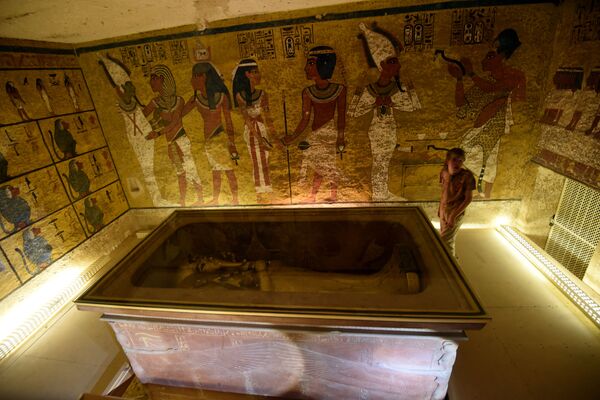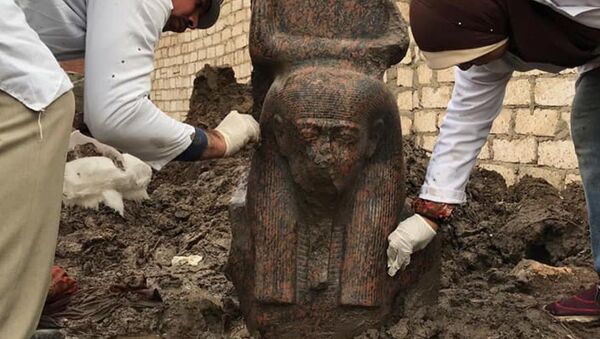A rare pink statue of Ancient Egypt’s King Ramses II has been discovered near the Giza pyramids west of Cairo.
The Egyptian Ministry of Antiquities announced on 11 December that the remarkably well-reserved granite bust is 105 cm high, 55 cm wide and 45 cm thick, depicting King Ramses II wearing a wig and a crown with "Ka" sign.
The symbol is thought to have been an aspect of the soul or spirit by the ancient civilisation, according to experts at the Egypt’s Ministry of Antiquities.
The "Ka" type of ancient Egyptian statues were intended to provide a resting place for the Ka (life-force or spirit) of the person after death, claim scientists.
The remarkable find was unearthed during excavation works the ministry's teams launched last week inside a piece of land owned by a citizen near the great temple of Ptah in Mit Rahina area.

According to the Ministry, the land owner had been arrested earlier in December while stealthily carrying out excavations on his land.
Mostafa Waziri, secretary-general of the Supreme Council of Antiquities, was quoted as saying by Xinhua:
"This discovery is considered one of the rarest archaeological discoveries. It is the first ever Ka statue made of granite to be discovered. The only Ka statue that was previously found is made of wood and it belongs to one of the kings of the thirteenth dynasty of ancient Egypt."
Ramses II, also known as "Ramses the Great," was the third pharaoh of the 19th dynasty. He is often regarded as the greatest, most celebrated, and most powerful pharaoh of the Egyptian Empire’s golden age, who ruled about 3,300 years ago.
His name is linked first and foremost with the well-known great temple in Abu Simbel village, Aswan province, in southern Egypt.
Templo de Nefertari en Abu Simbel pic.twitter.com/KBCAqQo7r8
— Marita Quiroga (@MaritaQuiroga2) December 11, 2019
He is believed to have taken the throne in his late teens and after his death was buried in a tomb in the Valley of the Kings.
His body was later moved to a royal cache, was discovered in 1881, and is now on display in the Egyptian Museum in Cairo.


